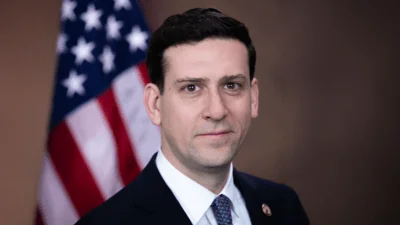Deputy Commerce Secretary Rebecca Blank Remarks at the Release of Intellectual Property Report Thank you, Richard. It is a pleasure to be with all of you today.
As Secretary Bryson said, the report we are releasing today shows the critical role that intellectual property protections play in our economy.
As we all know, America’s entrepreneurs, businesses, and workers are the primary source of new ideas that drive innovation. These are people who can take a rough sketch on a drawing board–and transform it into success in the global marketplace.
Patents, trademarks and copyrights–the main protections in our IP system–are critical tools that help commercialize game-changing ideas.
This includes everything from new developments in computing to new healthcare technologies to improved consumer products.
By creating a better environment for our private sector to capitalize those ideas, IP protections help foster the innovation and creativity that leads to a stronger economy and more jobs.
This report shows that nearly 35 percent of our GDP–more than $5 trillion–comes from IP-intensive industries.
Virtually every U.S. industry either produces or uses intellectual property protections–either directly or indirectly.
What we found in this report was that IP is particularly crucial in certain fields. Data from the U.S. Patent and Trademark Office showed that 75 industries rely heavily on IP protections.
In our analysis, we identified IP intensity-industries by either examining the ratio of IP protections to jobs or by using the results from previous, widely-cited studies.
For example, the most patent-intensive industry–computer and peripheral equipment–has 277 patents-per-1,000 jobs The top trademark-intensive industry is audio and video equipment manufacturing.
And the most copyright-intensive industry is newspaper, periodical, book and directory publishers.
It also became very clear that IP protections have a ripple effect in our private sector. They don’t solely benefit the company that applies for a patent.
For example, a newly patented technology in computer manufacturing could increase the demand for products in related industries, such as semiconductors.
Or, a new patent-protected green technology can be used to help auto manufacturers build more energy-efficient cars.
As the Secretary mentioned, we found that IP-intensive industries support a total of about 40 million jobs. 27 million of those are either on payroll or under employment contracts, working directly for the IP-intensive industries. Nearly 13 million more are indirectly supported through the supply chains that service these industries. In other words, every 2 jobs in IP-intensive industries support an additional job elsewhere in the economy.
Interestingly, these IP-intensive jobs are clustered in three places in the U.S.: on the West Coast, primarily in California; on the East Coast, primarily in the upper northwest; and in the upper central Midwest. The most IP-intensive states, are California, Minnesota, Wisconsin, New Jersey, Massachusetts, Connecticut, Rhode Island, Vermont, and New Hampshire.
On top of that, IP-driven jobs are good jobs. In fact, wages for jobs in IP-intensive industries are 42 percent higher on average than wages in other industries. And in recent years, wages have grown quickly in patent- and copyright-intensive industries.
This means that IP protections aren’t just important for businesses and entrepreneurs–they are important for working families. In other words, these good-paying jobs help support economic security for America’s middle class–and they will continue to do so in the years to come.
Clearly, making sure that we adequately protect intellectual property is vital to maintaining America’s competitive edge and driving our overall prosperity.
As the Secretary has mentioned, the Commerce Department is committed to strengthening our intellectual property system–both in the short- and long-term. We will be efficient and effective in helping entrepreneurs protect their intellectual property–which is the fruit of their labor. We will offer them smarter tools, streamlined processes and fewer barriers.
Recently, I saw our progress first-hand. I swore in nine new administrative judges at our U.S. Patent and Trademark Office.
These men and women will help resolve patent disputes without moving to expensive and time-consuming litigation, helping to assure that game-changing ideas break through.
All of us at the Commerce Department know that when businesses are confident that their ideas will be protected, they can pursue even bigger ideas and bolder technological advances.
Let me close by thanking everyone who contributed to this groundbreaking report which will continue to help guide the work we do throughout the administration to help create jobs. I particularly want to thank our Chief Economist and Acting Under Secretary for Economic Affairs, Mark Doms, as well as the Chief Economist at PTO, Stuart Graham, who together oversaw the team that produced this report.
And now, I’d like to turn it over to the Director of the U.S. Patent and Trademark office, David Kappos. Thank you.
Source: U.S. Department of Commerce








